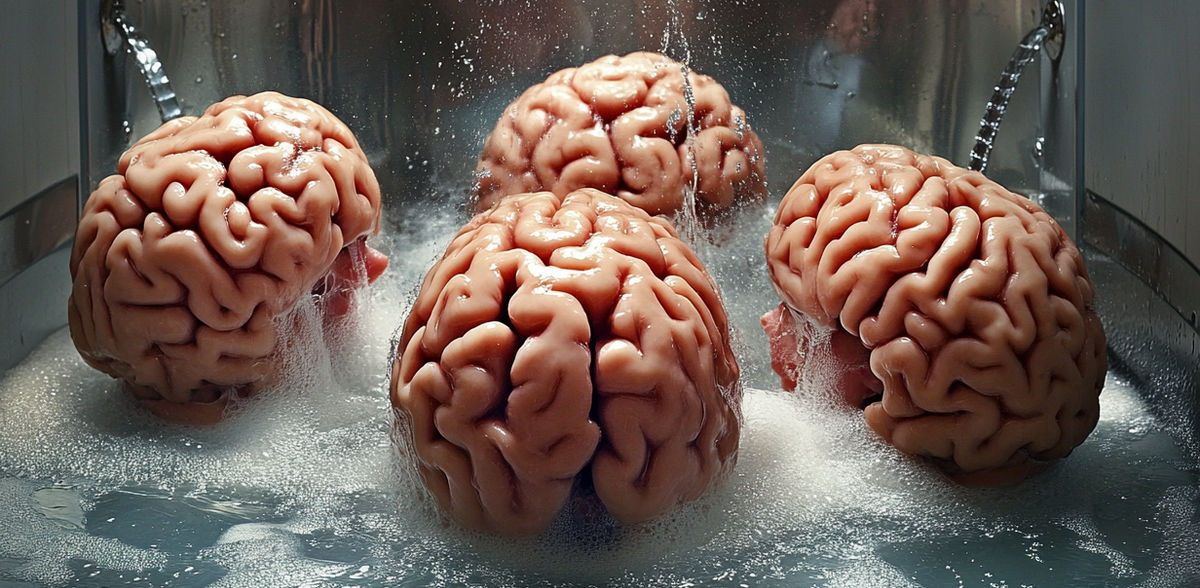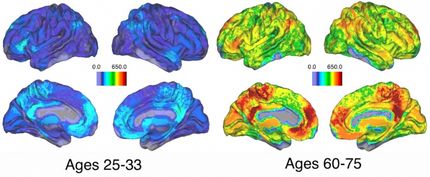Neurobiology: Washing machine for the brain
Advertisement
Researchers at Goethe University Frankfurt and the University of California in San Diego have used microscopic techniques to show for the first time that the blood vessels entering the brain pulsate independently of the heartbeat and brain activity. The waves traveling through the brain may not only influence the blood supply to the organ - it is conceivable that they help to mix the cerebrospinal fluid and thus improve the removal of waste products.
The blood transports oxygen and nutrients to each individual cell and at the same time removes waste products. The brain is an organ with high oxygen and nutrient requirements. Accordingly, it is particularly well supplied with blood. Fresh, oxygen-rich blood is delivered from the heart via the large cerebral arteries to a network of blood vessels that surround the surface of the brain. The dipping arterioles branch off from these so-called pia vessels into the interior of the brain. Blood flow to the brain is actively controlled depending on neuronal activity: areas of the brain with greater metabolic activity are better supplied with blood than others - a phenomenon that is exploited by imaging techniques such as functional magnetic resonance imaging (fMRI).
In addition, there is another mechanism that influences the blood supply to organs and has been known since the 18th century: vasomotion. This involves oscillations of the vessel walls, which are caused by alternating contraction and relaxation of the smooth muscle cells in the vessel walls and are completely independent of the heartbeat. These oscillations occur periodically once every ten seconds and have been described in mammals as diverse as humans, mice and bats. Vasomotion has also been demonstrated in the pia vessels of the brain.
Using a combination of microscopic and physical methods, a team of researchers led by Thomas Broggini from Goethe University in cooperation with the University of California in San Diego has now been able to visualize these oscillations for the first time in the submerging arterioles of the cerebral cortex of mice.
Measurements showed that the vasomotion changed the blood flow in the vessels by 20 percent. Interestingly, the effect was more pronounced at rest than in active areas of the brain. "This shows that vasomotion has a profound effect on blood flow in the brain independently of neurological signals," says first author Thomas Broggini. The oscillations generate long-wave "traveling waves" along all arterioles, which propagate in the brain at a speed of two millimeters per second. Their function is still a mystery, especially as they travel in completely different directions. However, bulges that generate the waves on the blood vessels could provide an indication of a possible function. The researchers speculate that these undulating bulges could help to mix the cerebrospinal fluid (CSF) that surrounds the brain cells. "This could improve the removal of misfolded proteins and waste products through the cerebrospinal fluid. This mechanism is disrupted in Alzheimer's dementia and other neurodegenerative diseases," explains Broggini.
The new findings could help to better understand fMRI scans, which visualize the blood flow in the brain for diagnostic purposes. According to Broggini, the researchers are also interested in how vasomotion influences diseases in which the blood supply is disturbed: "In further work here in Frankfurt, we will investigate in future how the traveling waves are altered in strokes, cerebral haemorrhages and neurodegenerative diseases and what influence they have on the development of the diseases." New therapies could then aim to modulate vasomotion, for example, in order to improve the blood supply in the affected regions of the brain.
Note: This article has been translated using a computer system without human intervention. LUMITOS offers these automatic translations to present a wider range of current news. Since this article has been translated with automatic translation, it is possible that it contains errors in vocabulary, syntax or grammar. The original article in German can be found here.
Original publication
Thomas Broggini, Jacob Duckworth, Xiang Ji, Rui Liu, Xinyue Xia, Philipp Mächler, Iftach Shaked, Leon Paul Munting, Satish Iyengar, Michael Kotlikoff, Susanne J. van Veluw, Massimo Vergassola, Gal Mishne, David Kleinfeld; "Long-wavelength traveling waves of vasomotion modulate the perfusion of cortex"; Neuron, Volume 112




























































